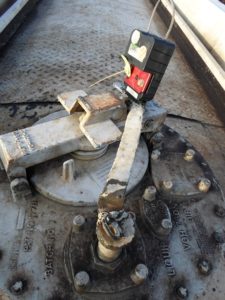East Africa uses cargo tracking to foils criminals and collect tax
Shem Oirere looks at the beneficial effect of cargo tracking.
The mandatory installation of electronic cargo tracking and security (ECTS) systems in Kenya, Tanzania and Uganda has helped enhance revenue collection, enforce cargo handling requirements, improved the business environment of the respective countries’ trade routes and helped cargo hauliers cut costs.
This is being spearheaded by the state-owned tax collection agencies and the improved custom duty collection has not only enabled a reduction of import tax in some instances, but has also made it possible for governments to reduce tax on cargo.
Kenya Revenue Authority, Uganda Revenue Authority and Tanzania Revenue Authority have reported success in addressing illegal cargo dumping, improving security of cargo along the region’s Northern Corridor. Cargo dumping is where goods destined for, say, Uganda are illegally diverted into the Kenyan market and previously such activities have led to huge losses in tax earnings. The technology has also improved operations at the ports of Mombasa and Dar es Salaam and reinforced the agencies’ drive to automate their services.
According to Freight Watch International, the East African countries are on the list of spots in Africa where businesses and supply managers have reported cargo theft as one of the main challenges facing their operations. This ranks alongside corruption, high rates of crime and violence, poor infrastructure, weak governance, political instability and social unrest.
Fact File Kenya, Tanzania & Uganda
200% Increase
for ECTS installations in 2013
OVER 5,000
consignments monitored between May and September 2014 saved …
… $252,690
in escort fees by frieght companies that installed tracking systems in their prime movers
Freight Watch highlights difficulties in collecting accurate cargo crime data because incident reporting ‘remains extremely poor throughout Africa’. Some of its information comes from the media but it said sometimes the incident is only described in general terms rather than detailing the items taken and the methods employed by the thieves.
Mandatory fitment
While technology behind ECTS became available in early 2004, it was only in April 2010 that the Kenyan government introduced the mandatory installation requirements and Uganda followed in November 2013. However some companies did preempt the legislation and in partnership with private hauliers, freight forwarders and government revenue agencies, rolled out cargo tracking technology in East Africa to help curb the thefts and minimise losses on transit cargo.
One example is Switzerland-based SGS which has pioneered its SGS Omnis system in Kenya which is being used to track cargo, collect revenue and ‘make sure goods are delivered to the people who need them’. SGS, which offers inspection, testing, certification and verification services globally, uses technology from specialist asset tracking company Savi. Savi provides the hardware and software for the OMNIS technology which provides continuous tracking of cargo.

“Using this technology, we are assisting Kenya’s customs processes so that trucks entering Kenyan territory are equipped with GSM/GPRS communications,” says Vincent Tibbs, governments and institutions services regional ECTS manager at SGS’s East Africa office.
Electronic seals fixed to containers are coupled with the trucks using radio frequency identification (RFID) and predefined transit corridors are configured into the system for geo-fencing purposes.
“Trucks that deviate from the predefined route are immediately identified and the customs control room notified. If the seals are tampered with or broken, an alarm is triggered, so customs can take immediate action,” said Tibbs.
An in-vehicle module (IVM) is installed into the prime mover and communicates with the seal attached to the cargo via RFID. The seal is electronically and physically sealed (known as ‘arming’). “Once armed the seal communicates with the IVM if there is an anomaly in the cargo including attempts to open the seal, cutting the seal or removal of the container from the prime mover/truck,” says Tibbs.
“All the above alerts would then be sent by the IVM to the monitoring platform and trigger an automated email,” he said.
According to Tibbs, additional alerts include confirmation that the seal is armed, notification when the seal is disarmed, departure from the origin and arrival at the destination. It will also notify excessive dwell time at a particular location, any deviation of the vehicle/cargo from the predetermined route, tampering of the IVM and disconnection of the vehicle battery (the IVM has an internal power source lasting at least 48hrs). The email alerts are sent to SGS, Kenya Revenue Authority and the company contracting the ECTS services.
“In addition, the SGS control room would call the client directly and liaise with the Kenya Revenue Authority and police in instances where the cargo has deviated from its approved route or the seal is being tampered with,” said Tibbs.
elivered to the people who need them’. SGS, which offers inspection, testing, certification and verification services globally, uses technology from specialist asset tracking company Savi. Savi provides the hardware and software for the OMNIS technology which provides continuous tracking of cargo.
Source:
Read the full Article here: http://www.itsinternational.com/categories/enforcement/features/east-africa-uses-cargo-tracking-to-foils-criminals-and-collect-tax/
